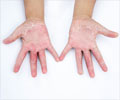Luliconazole Medication Information
Discover comprehensive details about Luliconazole, including its pronunciation, uses, dosage instructions, indications, and guidelines on how and when to take it or avoid it.
The updated prescription information covers potential side effects, precautions, warnings, and storage recommendations.
Additionally, explore the Luliconazole brands available in India and internationally, along with pricing information. For personalized advice, consult your healthcare provider.
Generic Name : Luliconazole Pronunciation : loo-li-KON-a-zole Therapeutic Classification : AntifungalsBrand Names or Trade Names of Luliconazole
India :
Overview of Luliconazole
Luliconazole is an anti-fungal agent which is applied to the skin to treat various fungal infections on the body.Why is Luliconazole Prescribed? (Indications)
Luliconazole is used to treat the fungal infections of the skin caused by the organisms such as Trichophyton rubrum and Epidermophyton floccosum.Luliconazole works by reducing the fungal growth which causes infection.
The fungal infections treated by luliconazole are as follows:
• Interdigital tinea pedis (athletes foot) - fungal infection that occurs between the toes
• Tinea cruris (jock itch) - fungal infection that occurs on the skin in the groin, buttocks and inner aspects of the thighs
• Tinea corporis ( ringworm) - fungal infections that form red scaly rashes on the body
It is used only in patients of 18 years of age and older.
When should Luliconazole not be taken? (Contraindications)
• Luliconazole cream should not be applied for the fungal infections that affect eye, or inside the mouth or the vagina.What is the dosage of Luliconazole?
• Luliconazole is used for application to the skin as a 1% cream.• A thin layer should be applied on the affected part and about 1 inch of the surrounding area once daily.
• The treatment duration is 1 week for tinea cruris or tinea corporis, and 2 weeks for tinea pedis.
How should Luliconazole be taken?
• Luliconazole comes as a cream to apply over the affected area on the skin.• The cream should cover the area and about 1-inch surrounding the affected area.
• After applying the cream to another part of the body, it is necessary to wash the hands thoroughly.
What are the warnings and precautions for Luliconazole?
•The safety and effectiveness of luliconazole in children and adolescents below 18 years of age is not known, and it is therefore not recommended in this age group.• The patients should be educated to report for any signs of reaction such as skin color changes, itching, or serious reactions which could include wheezing, chest tightness, fever, seizures and swelling of face or throat.
• Luliconazole should not be used for a condition for which it is not prescribed and should not to be recommended to another person without medical advice.
• Women should Inform your doctor if they are pregnant or plan to get pregnant during the treatment.
What are the side effects of Luliconazole?
The side effects usually occur as an application site reaction on the skin and include:• Burning sensation
• Itching
• Stinging
• Redness
• Irritation at the site
Postmarketing reports have identified more serious effects which include:
• Contact dermatitis
• Cellulitis
What are the other precautions for Luliconazole?
• Luliconazole should be continued as per dosing schedule for the full duration even if the signs of fungal infection improve.• It is advised not to miss doses to get the maximum benefit.
What are the Drug Interactions of Luliconazole?
Drug interactions could occur when luliconazole is applied to large areas of the skin.• Luliconazole may increase the blood level of some drugs including cilostazol.








